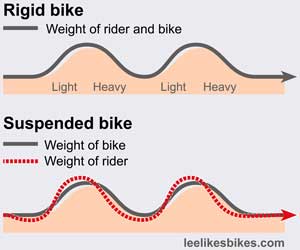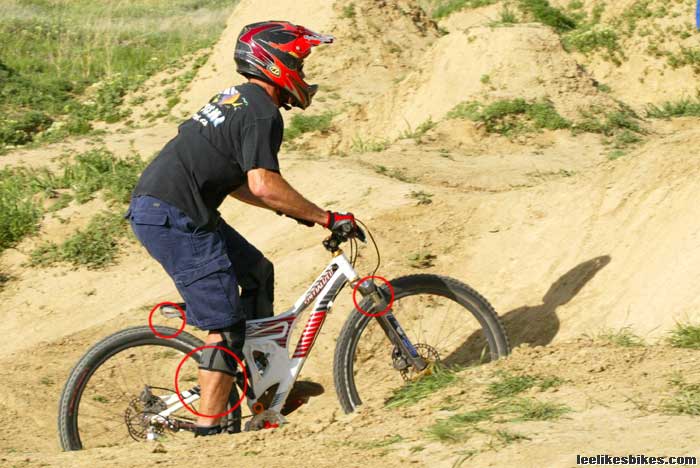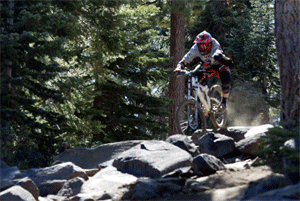Pumping with suspension

An eager mind wants tips for riding a pump track on a bike with 4-8 inches of suspension. Any excuse to draw a diagram …
Lee,
I want to build a pump track but don’t own a hardtail. I have PLENTY of space to build a pump track in my in-laws backyard (the not developed part behind the “real” backyard) about 150′ x 200′. I don’t own your book yet (I think I might order it tomorrow!) but I was wondering what your thoughts were about specific techniques for pumping on 4″ and 8″ travel bikes. I have never had to use pumping too much as I mostly rode DH on fireroads here in NORCAL, but think this would be a great way to hone my skills overall.
Cheers-
Alex
Stockton, CA
Hey Alex.
I pump quite a bit on my 4″ Specialized SX, and I occasionally pump my 5″ Stumpy or 6″ Enduro. I haven’t pump-tracked my Demo 8 yet, but that’s a great idea. It would build serious strength and prepare me for pumping rocks, logs and such.

|
Work it
Suspension absorbs body-travel and energy. You have to work harder for the same speed. So make your bike as stiff as possible. Also, try increasing your pedaling platform or low-speed compression; whichever your shock has.
Check out this diagram. To pump rollers, you unweight on the front sides and press hard on the back sides. This way the fronts don’t slow you down, and the backs give you speed. With a suspended bike you have to move farther up and down — use more body travel — to squish through your bike travel and achieve the same pressure on the ground. Look at the red dotted line: With suspension, the transitions from light to heavy to light are much more abrupt. You must push and pull much faster.
Time it
Just like diving boards and trampolines, each bike has a different bouncing frequency.
 Have you seen BMXers pump through jumps with hardly any body English? They’re not squashing all this suspension. |
The slower your bike’s frequency, the longer it takes to fully compress and release. Work ahead and give your bike time to do its thing.
If you want to go fast with suspension, your timing has to be perfect. With a hardtail you can barely pump the end of a backside and get a nice burst of speed; with suspension that lateness will push all your energy into the suspension, and you’ll get no pump (or supper).
Make the most of it
Suspension filters out small mistakes. It’s harder to go fast, but it’s easier to go medium or slow. Last winter one of the indoor BMX races had a technical rhythm section with steep faces. At race speed on my P.1, I was clipping the front sides and getting balled up. I switched to my SX, and I was actually faster — my little mistakes were getting lost in the suspension, and I was able to keep driving forward.
 Speaking of pumping over rough surfaces, watch Curtis Keene work this rocky downhill. He ignores most of the stones and focuses on pumping the major ups and downs. 1, 2, 3. |
If you’re building a pump track for suspension bikes, make the rollers taller and farther apart than you would for BMX bikes or hardtails. Remember that it takes more time and space to load and unload your tires. Instead of one-foot rollers three feet apart, go for two-foot rollers five feet apart, or three-foot rollers eight feet apart. That said, if you can pump a DH bike through a set of micro stutter bumps, when you reach your next rock garden it’ll be GAME ON.
With suspension, your pump track doesn’t have to be as smooth. Imagine a pump track with big rocks and logs. Now THAT would be great downhill training.
I hope this helps. Good luck, and tell me how it goes.
— Lee

Comments are closed.